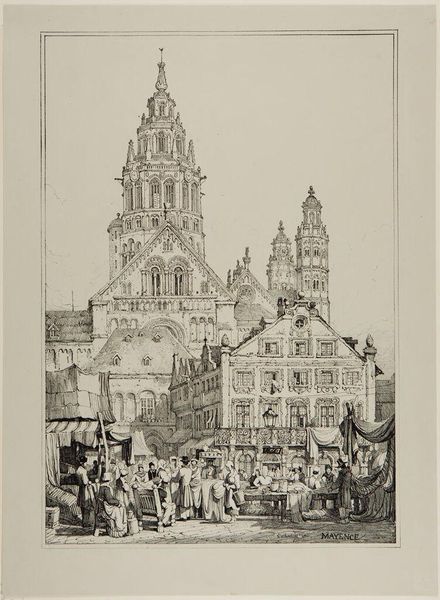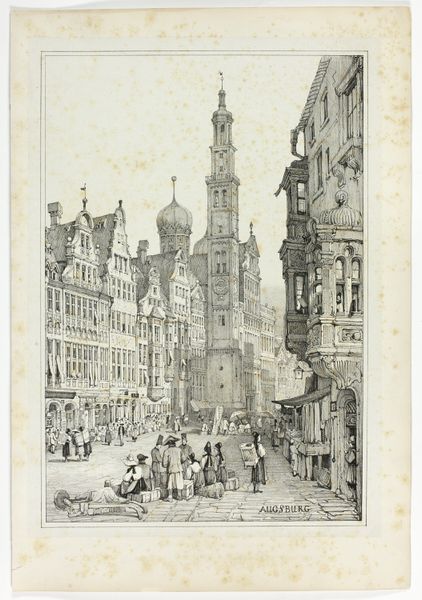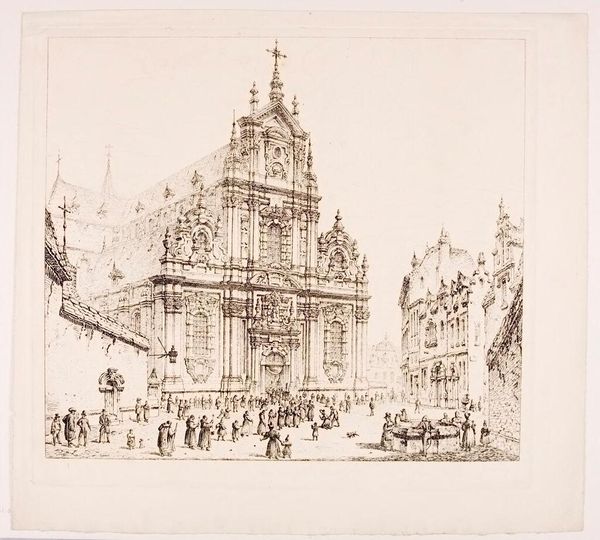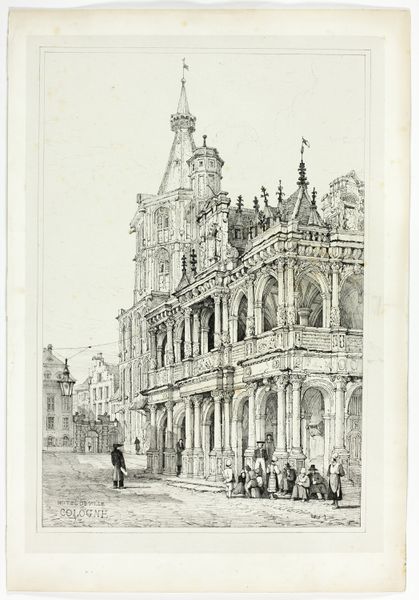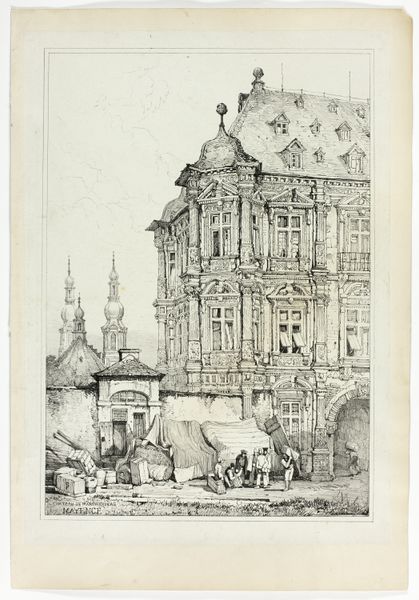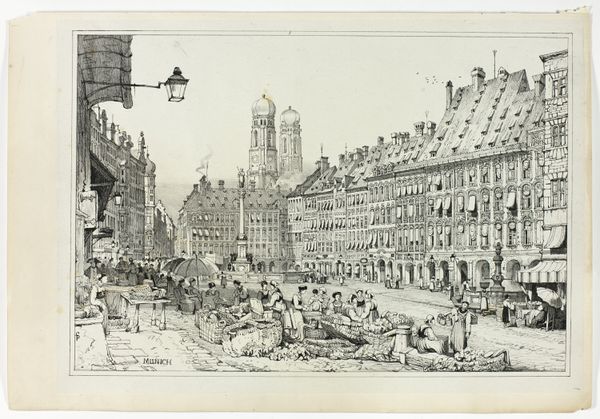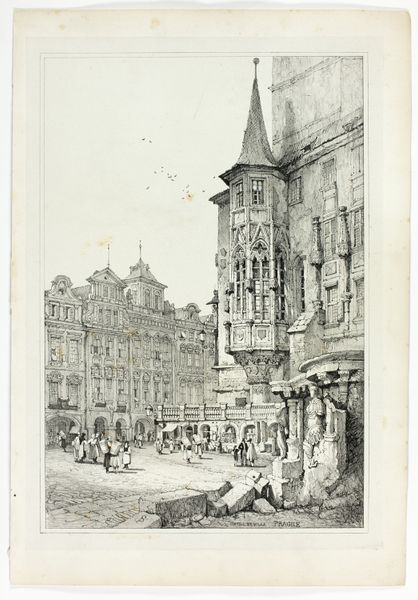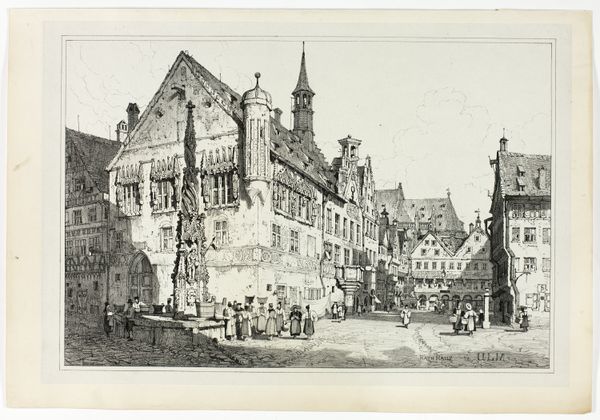
Dimensions: 290 × 425 mm (image); 310 × 445 mm (primary support); 345 × 500 mm (secondary support)
Copyright: Public Domain
Editor: Samuel Prout's "Cathedral at Mayence," created in 1833, is a lithograph depicting a bustling cityscape dominated by the imposing cathedral. I'm immediately struck by the contrast between the grand, almost austere architecture and the lively market scene unfolding below. What social dynamics might Prout be trying to capture here? Curator: It's crucial to understand the socio-political context of 1830s Europe. This print doesn't simply depict a cathedral; it visualizes power structures. The towering cathedral, rendered in precise detail, signifies not only religious authority but also the deeply ingrained patriarchal structures of the time. Note how it overshadows the figures in the marketplace. What could that placement suggest? Editor: Maybe it implies the Church's influence on everyday life? Even mundane activities like trade occur under its gaze. Curator: Precisely. Furthermore, consider the "cityscape" theme itself. Urban environments were, and are, sites of social negotiation, where class, gender, and religious differences played out daily. Who do you think had access to the power that cathedral embodies, and who was likely excluded from it? Editor: The merchants in the foreground, presumably, had some power. But probably not the women. They are only there to support the activities, not as equals. And perhaps the artist is placing himself on a different standing as the people portrayed? Curator: Indeed. Prout, as a travelling artist, likely occupied a liminal space, observing and interpreting the social dynamics of Mainz. How might his own identity – his gender, class, and nationality – have shaped his perspective and, consequently, his depiction of this scene? What purpose may this depiction serve in England? Editor: That's a lot to think about. I hadn't considered the artist's own positionality in interpreting the scene. It makes you wonder what he thought of what he saw, of their everyday life. Curator: Exactly. By situating the artwork within these broader historical and social frameworks, we move beyond mere aesthetic appreciation and begin to critically examine the power dynamics embedded within it. I learned that we are limited in our vision based on our time and standings. What did you learn?
Comments
No comments
Be the first to comment and join the conversation on the ultimate creative platform.
